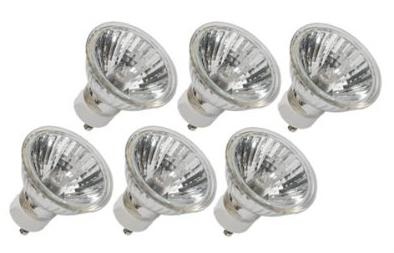
The most qualitative transfer of color possesshalogen lamps. According to the principle of action and structure, they are similar to incandescent lamps, but they also have some differences. The spiral of heat-resistant tungsten is sealed in a glass flask filled with an inert gas. The bulb of the halogen lamp is made of quartz glass having a high melting point. This allows you to make smaller sizes of the bulb and increase the internal pressure. This makes it possible to increase the temperature of the spiral and leads to greater luminous efficiency and longer service life.

For lighting the premises use halogenlamps with an external bulb and a directional lamp. Lamps that have an external glass bulb may look like a conventional incandescent lamp, but usually become smaller, which is why they are used in miniature chandeliers and sconces. Such halogen lamps have standard Edison socles and can replace incandescent lamps in conventional lighting fixtures. The outer bulb can be made of clear, milky or matt

For spot lighting use halogenlamps with reflectors, which are also called directional light lamps. They are produced in several sizes with different angles of radiation. The most common is the aluminum reflector, it takes most of the light and heat away, creating a directional stream of light. There are still interference reflectors that divert heat not forward, as in aluminum reflectors, but back, lamps with an IRC reflector that reflect heat back to the spiral, increasing the temperature of the spiral and reducing power consumption.

Lamps for directional light (with reflectors) alsomay be low-voltage or mains voltage, but the plinths are two-pin. Lamps of mains voltage are produced only with socles G10 and G9. This is done so that they can not be confused with low-voltage ones. This type of lighting is also called recessed halogen lamps. They are often used when organizing lighting. Due to the narrow directionality of the light flux with their help, it is possible to achieve interesting effects. For the same purpose, miniature capsule (finger) lamps are used. They also have only two-pin socles and can be used in general lighting fixtures.
The advantage of halogen lamps is their highlight output, and the disadvantage is too white light and the presence of ultraviolet radiation (although there are lamps that filter out this type of rays). Due to the presence of ultraviolet rays, objects colored with unstable paints can fade faster.
</ p>